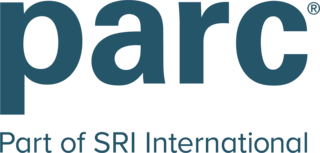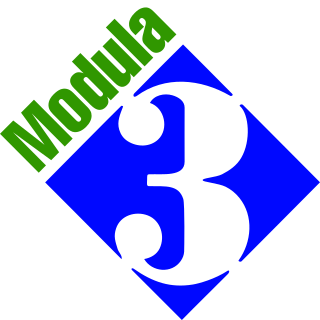
Digital Equipment Corporation, using the trademark Digital, was a major American company in the computer industry from the 1960s to the 1990s. The company was co-founded by Ken Olsen and Harlan Anderson in 1957. Olsen was president until he was forced to resign in 1992, after the company had gone into precipitous decline.

Alpha is a 64-bit reduced instruction set computer (RISC) instruction set architecture (ISA) developed by Digital Equipment Corporation (DEC). Alpha was designed to replace 32-bit VAX complex instruction set computers (CISC) and to be a highly competitive RISC processor for Unix workstations and similar markets.

SRI Future Concepts Division is a research and development company in Palo Alto, California. It was founded in 1969 by Jacob E. "Jack" Goldman, chief scientist of Xerox Corporation, as a division of Xerox, tasked with creating computer technology-related products and hardware systems.

Butler W. Lampson FRS is an American computer scientist best known for his contributions to the development and implementation of distributed personal computing.

The Xerox Alto is a computer system developed at Xerox PARC in the 1970s. It is considered one of the first workstations or personal computers, and its development pioneered many aspects of modern computing. It features a graphical user interface (GUI), a mouse, Ethernet networking, and the ability to run multiple applications simultaneously. It is one of the first computers to use a WYSIWYG text editor and has a bit-mapped display. The Alto did not succeed commercially, but it had a significant influence on the development of future computer systems.

Modula-3 is a programming language conceived as a successor to an upgraded version of Modula-2 known as Modula-2+. While it has been influential in research circles it has not been adopted widely in industry. It was designed by Luca Cardelli, James Donahue, Lucille Glassman, Mick Jordan, Bill Kalsow and Greg Nelson at the Digital Equipment Corporation (DEC) Systems Research Center (SRC) and the Olivetti Research Center (ORC) in the late 1980s.

Project Athena was a joint project of MIT, Digital Equipment Corporation, and IBM to produce a campus-wide distributed computing environment for educational use. It was launched in 1983, and research and development ran until June 30, 1991. As of 2023, Athena is still in production use at MIT. It works as software that makes a machine a thin client, that will download educational applications from the MIT servers on demand.

Robert William Taylor, known as Bob Taylor, was an American Internet pioneer, who led teams that made major contributions to the personal computer, and other related technologies. He was director of ARPA's Information Processing Techniques Office from 1965 through 1969, founder and later manager of Xerox PARC's Computer Science Laboratory from 1970 through 1983, and founder and manager of Digital Equipment Corporation's Systems Research Center until 1996.
AT&T Computer Systems is the generic name for American Telephone & Telegraph's unsuccessful attempt to compete in the computer business. In return for divesting the local Bell Operating Companies, AT&T was allowed to have an unregulated division to sell computer hardware and software. The company made the 3B series computers.

Charles Patrick "Chuck" Thacker was an American pioneer computer designer. He designed the Xerox Alto, which is the first computer that used a mouse-driven graphical user interface (GUI).
Robert Alan Iannucci is a computer scientist. His areas of expertise include multiprocessing and embedded systems. He earned his PhD at MIT in 1988 with a thesis titled "A dataflow/von Neumann hybrid architecture.".

The Itsy Pocket Computer is a small, low-power, handheld device with a highly flexible interface. It was designed at Digital Equipment Corporation's Western Research Laboratory to encourage novel user interface development—for example, it had accelerometers to detect movement and orientation as early as 1999.
Modula-2+ is a programming language descended from the Modula-2 language. It was developed at DEC Systems Research Center (SRC) and Acorn Computers Ltd Research Centre in Palo Alto, California. Modula-2+ is Modula-2 with exceptions and threads. The group which developed the language was led by P. Rovner in 1984.
The Firefly was a shared memory asymmetric multiprocessor workstation, developed by the Systems Research Center, a research organization within Digital Equipment Corporation. The first version built contained up to seven MicroVAX 78032 microprocessors. The cache from each of the microprocessors kept a consistent view of the same main memory using a cache coherency algorithm, the Firefly protocol. The second version of the Firefly used faster CVAX 78034 microprocessors. It was later introduced as a product by DEC as the VAXstation 3520/3540 codenamed Firefox.
The Firefly cache coherence protocol is the schema used in the DEC Firefly multiprocessor workstation, developed by DEC Systems Research Center. This protocol is a 3 State Write Update Cache Coherence Protocol. Unlike the Dragon protocol, the Firefly protocol updates the Main Memory as well as the Local caches on Write Update Bus Transition. Thus the Shared Clean and Shared Modified States present in case of Dragon Protocol, are not distinguished between in case of Firefly Protocol.
Baby Modula-3 is a functional programming sublanguage of Modula-3 programming language based on ideals invented by Martín Abadi. It is an object-oriented programming language for studying programming language design; one part of it is implicitly prototype-oriented, and the other is explicitly statically typed designed for studying computer science type theory. It has been checked as a formal language of metaprogramming systems. It comes from the Scandinavian School of object-oriented languages.
Michael Burrows, FRS is a British computer scientist and the creator of the Burrows–Wheeler transform, currently working for Google. Born in Britain, as of 2018 he lives in the United States, although he remains a British citizen.

Oyekunle Ayinde "Kunle" Olukotun is a British-born Nigerian computer scientist who is the Cadence Design Systems Professor of the Stanford School of Engineering, Professor of Electrical Engineering and Computer Science at Stanford University and the director of the Stanford Pervasive Parallelism Lab. Olukotun is known as the “father of the multi-core processor”, and the leader of the Stanford Hydra Chip Multiprocessor research project. Olukotun's achievements include designing the first general-purpose multi-core CPU, innovating single-chip multiprocessor and multi-threaded processor design, and pioneering multicore CPUs and GPUs, transactional memory technology and domain-specific languages programming models. Olukotun's research interests include computer architecture, parallel programming environments and scalable parallel systems, domain specific languages and high-level compilers.
Susan Owicki is a computer scientist, Association for Computing Machinery (ACM) Fellow, and one of the founding members of the Systers mailing list for women in computing. She changed careers in the early 2000s and became a licensed marriage and family therapist.
James Benjamin Saxe is an American computer scientist who has worked for many years at the DEC Systems Research Center and its successors, the Compaq Systems Research Center and the Systems Research Center of HP Labs.











